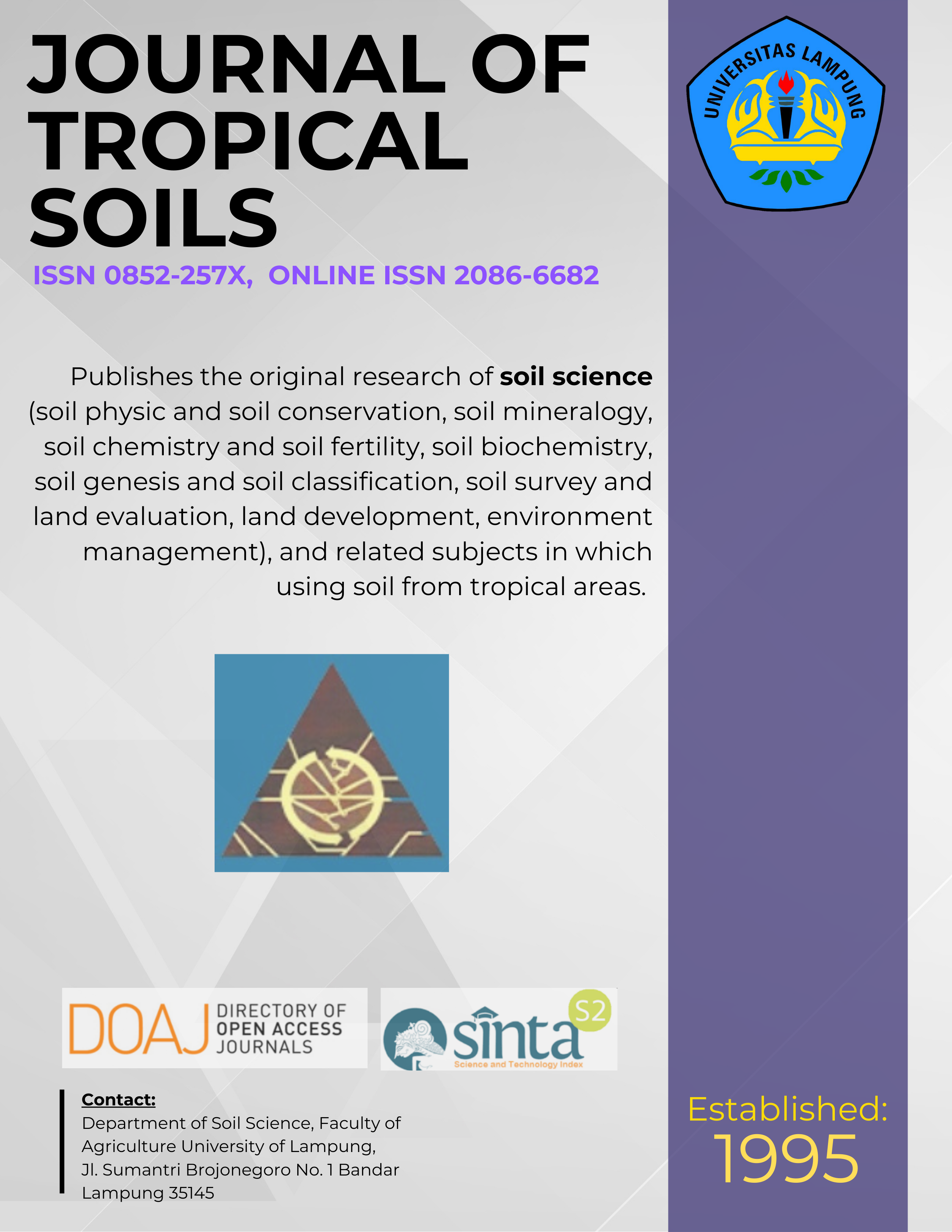Pemanfaatan Bakteri Selulolitik dan Xilanolitik yang Potensial untuk Dekomposisi Jerami Padi
Main Article Content
Abstract
There were 3 prospective isolates of cellulolytic bacteria resulted from the total of 31 isolates we found, i.e. C4-4, C5-1, and C11-1. Four combinations of bacteria including C4-4 + Xilanolytic (A), C5-1 + Xilanolytic (B), C11-1 + Xilanolytic (C), 45I-3 + 234P-16 (D), and control (E, without bacteria) were applied as inoculant of rice straw decomposition. In the incubation period the pH-H2O value of C4-4 + Xilanolytic (A) and C5-1 + Xilanolytic (B) was relatively stable. The C/N ratio of all treatments decreased after 3 weeks of incubation. The C/N ratio value of A, B, C, D and E treatments were 22.48, 23.43, 27.49, 26.82, and 29.53 respectively. Decomposition rate all of combination treatments were faster than the control. The content of macro-micro nutrient of A, B, C, and D treatments increased in the end of measurement, while the control didn’t. The physical characteristic of substrate after incubation was better in A and B treatments that others. The result indicated that the combination of C4-4 + Xilanolytic (A) and C5-1 + Xilanolytic (B) bacteria were the best combination for decomposition of rice straw.
Â
Downloads
Article Details
Section
License for Authors
Authors who publish with this journal agree to the following terms:
- Authors retain copyright and grant the journal right of first publication with the work simultaneously licensed under a Creative Commons Attribution License that allows others to share the work with an acknowledgement of the work's authorship and initial publication in this journal.
- Authors are able to enter into separate, additional contractual arrangements for the non-exclusive distribution of the journal's published version of the work (e.g., post it to an institutional repository or publish it in a book), with an acknowledgement of its initial publication in this journal.
- Authors are permitted and encouraged to post their work online (e.g., in institutional repositories or on their website) prior to and during the submission process, as it can lead to productive exchanges, as well as earlier and greater citation of published work (See The Effect of Open Access).
License for Regular Users
Other regular users who want to cite, distribute, remix, tweak, and build upon author’s works, even for commercial purposes, should acknowledge the work’s authorship and initial publication in this journal, licensed under a Creative Commons Attribution License.

